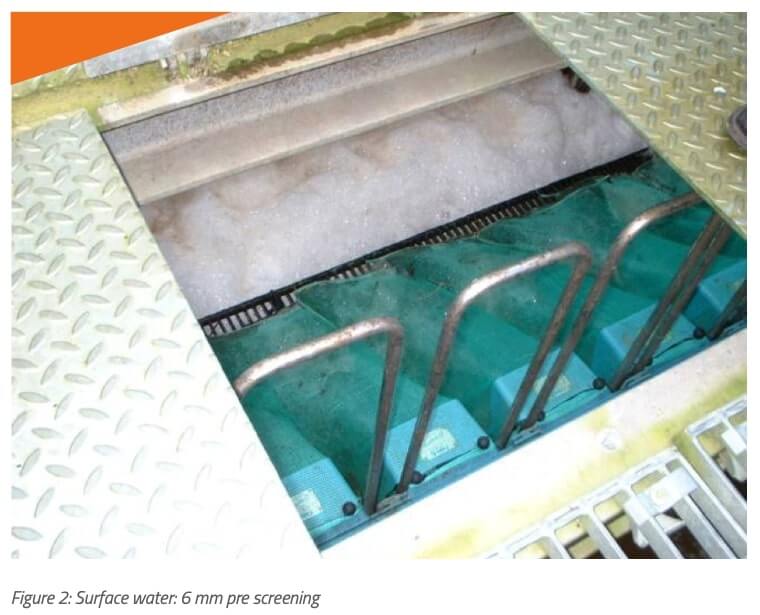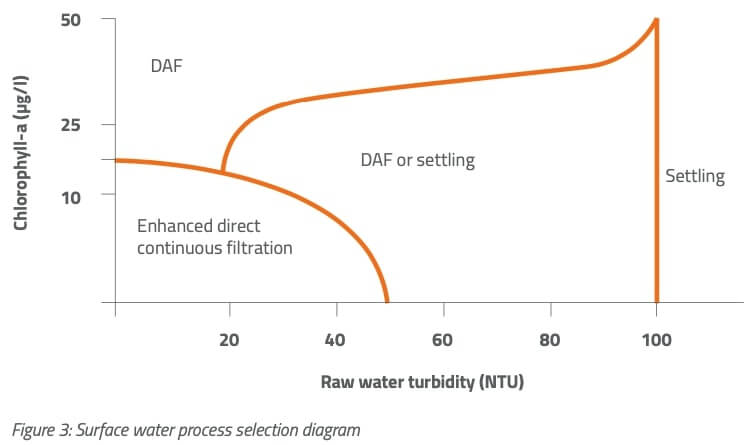The moving bed filtration process is a treatment process developed as an alternative for conventional rapid sand filters (RSF). The particular features allows MBF to be used as an alternative for a broader range of processes: flocculation – settling – RSF. Therefore it is essential to understand the specific features of the MBF process.
In the MBF, the water to be treated flows in an upward direction through the sand bed (typical filtration rates: 5 –12 m/h). During the upward filtration process impurities are retained within the pores of the filter bed. The filtrate – free from solids – is discharged in the upper part of the filter via a fixed overflow weir.
Simultaneously the filter bed is constantly moving downward (typically with velocities of 0.3 – 0.8 m/h), as it is sucked into the airlift at the center bottom of the filter. The suction of sand and retained solids is induced by the airlift principle: feeding a small amount of compressed air into the airlift pipe starts the suction process, forcing a mixture of dirty sand and water upward through a central pipeline.








